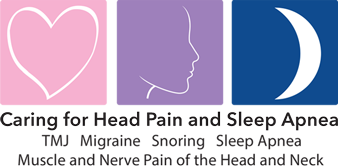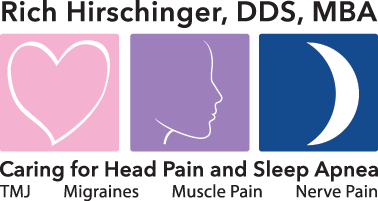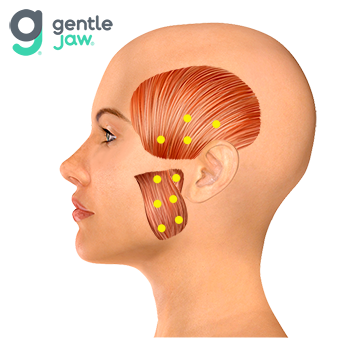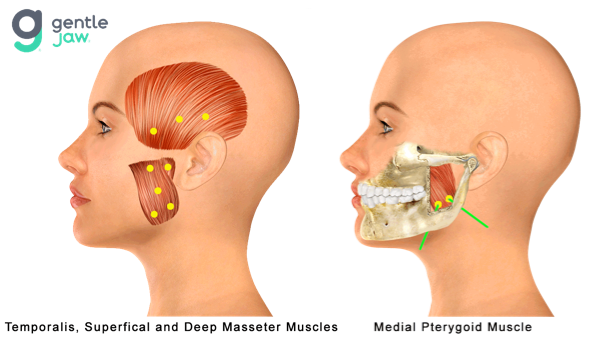

Diplomate American Board of Orofacial Pain
9615 Brighton Way, Suite 323
Beverly Hills, CA 90210
888.981.8981
Botox Treatment for TMJ Myofascial Muscle Pain

For those potential patients who do not know me yet, please know that I really dislike the term "TMJ." Why? Because it is an anatomical part of everyone's anatomy and is not a diagnosis. A doctor telling you that you have "TMJ" is like a doctor telling you that you have "knee." TMJ stands for temporomandibular joint, which is the joint that attaches the jawbone called the mandible to the skull. So, if TMJ is not a diagnosis, what is the diagnosis for people who suffer a lot of pain in the jaw? The pain is usually due to myalgia, which is a fancy way of saying muscle pain. What is a good treatment for muscle pain? I like to start by having my patients stretch using the gentle jaw, which is a passive jaw stretching device I invented. If that does not help enough, patients can elect to try trigger point injections, which involve injecting plain lidocaine into the painful muscles to see if that provides a benefit. The procedure can be repeated if it does help but doesn't last long. Botox is the next option if it doesn't last longer with the second treatment.
Four main muscles close the jaw: the superficial masseter, deep masseter, temporalis, and medial pterygoid. The medial pterygoid does not always contribute to the pain patients feel, so it does not always need to be injected with Botox. If it does not need to be injected, I follow the protocol in the image to the right. Each yellow dot represents 5 units of Botox. Four locations of the temporalis muscle and six locations between the superficial masseter and the deep masseter are injected. The total is ten locations of 5 units each, which is 50 units of Botox. Since Botox should be injected symmetrically, 100 units of Botox is needed and is standard when treating pain from myalgia.
 If the medial pterygoid is involved in causing pain, then I follow the protocol shown in the double image below to the right. As you can see, there are only three yellow dots in the temporalis, which is above the ear, and 5 yellow dots in the superficial masseter and deep masseter muscles along the jawline. This means that there are 10 units more available to use in the medial pterygoid muscle inside the jaw. The path of the Botox injection is shown in the green line, and the target of the Botox is shown by the yellow dot on the far right image. Each yellow dot represents 5 units of Botox. Using this protocol, three locations of the temporalis muscle, five locations between the superficial and deep masseter, and two locations of the medial pterygoid are injected with Botox; the total is still ten locations of 5 units each, which is 50 units of Botox per side but using this protocol allows all four muscles that close the jaw to be treated with Botox.
If the medial pterygoid is involved in causing pain, then I follow the protocol shown in the double image below to the right. As you can see, there are only three yellow dots in the temporalis, which is above the ear, and 5 yellow dots in the superficial masseter and deep masseter muscles along the jawline. This means that there are 10 units more available to use in the medial pterygoid muscle inside the jaw. The path of the Botox injection is shown in the green line, and the target of the Botox is shown by the yellow dot on the far right image. Each yellow dot represents 5 units of Botox. Using this protocol, three locations of the temporalis muscle, five locations between the superficial and deep masseter, and two locations of the medial pterygoid are injected with Botox; the total is still ten locations of 5 units each, which is 50 units of Botox per side but using this protocol allows all four muscles that close the jaw to be treated with Botox.
Botox FAQ
Q: Does Botox stop clenching and/or grinding?
A: No. Botox does not stop clenching and/or grinding, but it does help reduce the forces involved.
Q: How long does Botox last?
A: Botox typically lasts about three months. However, not all patients need retreatment after three months. If you need Botox for your jaw-closing muscles, you should use the gentle jaw to stretch your jaw muscles for 30 seconds every two hours, make sure your teeth are apart during the day, and wear your nightguard every night to help decrease the forces on your jaw muscles and jaw joint.
Q: When should I repeat Botox treatment?
A: You should repeat Botox if and when the pain returns.
Q: Do I need to repeat Botox every three months?
A: No. I treat pain. If you don't have pain, then you don't need treatment.
Q: How does Botox work?
A: Botox works by blocking the release of acetylcholine. Acetylcholine is one of the many neurotransmitters in the human body. It is the neurotransmitter that is responsible for muscle contraction.
Q: Do I have to get Botox treatment on both sides if I only have pain on one side?
A: Yes, it is recommended to have Botox treatment on both sides, even if the pain is on one side. We don't want to weaken one side and leave the other side at full strength, which can cause pain on the good side.
Q: Do you only use Botox?
A: Yes, I only use Botox manufactured by Allergan. AbbVie now owns Allergan. You might be interested to learn that all Botox is manufactured in Ireland.
Learn about the muscle referral patterns of the muscles that refer pain into teeth.
Learn about the muscle referral patterns of the muscles that refer pain into the TMJ.
Learn about Botox treatment for migraine.
Learn about appliances for TMJ.






